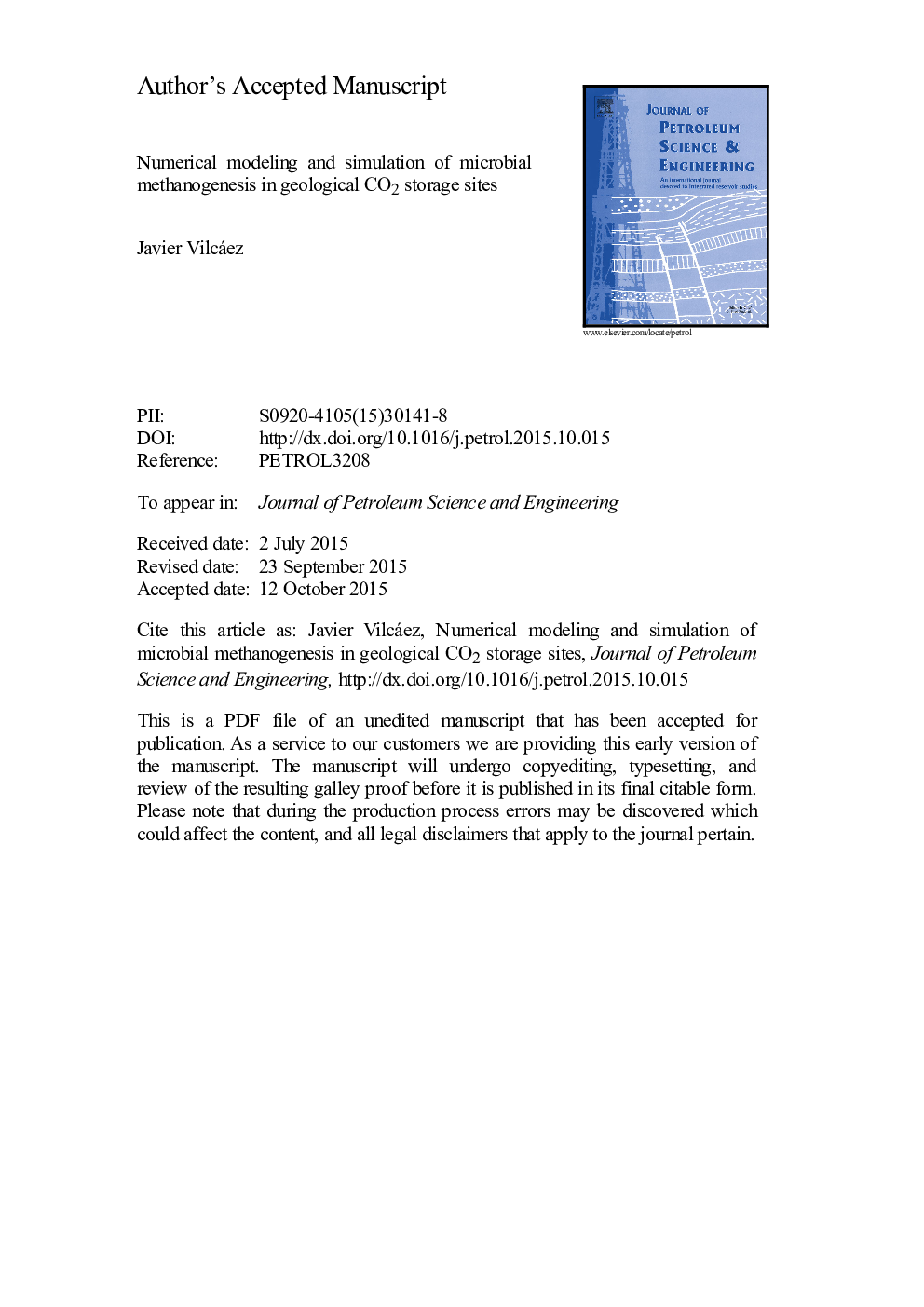| Article ID | Journal | Published Year | Pages | File Type |
|---|---|---|---|---|
| 8126479 | Journal of Petroleum Science and Engineering | 2015 | 30 Pages |
Abstract
A numerical model was developed to assess the feasibility of microbial CH4 generation in geological CO2 storage sites. The model accounts for water-rock geochemical reactions, microbial competition between methanogenic microbes and sulfate reducing bacteria (SRB) for H2 and acetate, and the effect of pH on the activity of microbes. For the sake of analysis, carbohydrates contained in the stimulating nutrient injected along with CO2 serves as source for the biogenic formation of H2 and acetate by H2-forming fermentative microbes. Simulation results unveiled that the pH buffering effect of carbonate minerals such as calcite is of outmost importance to push methanogenesis reactions. CO2 injection into a geological formation containing calcite enhances the biogenic supply of H2 and acetate by providing near optimum pH conditions for the activity of H2-forming fermentative microbes. However, when sulfate in the formation water is present in excesses, hydrogenotrophic and acetotrophic SRB outcompete hydrogenotrophic and acetotrophic methanogenic microbes for H2 and acetate, respectively. This is reflected by the predominant formation of H2S and negligible formation of CH4. With calcite in the mineral phase, the activity of SRB and methanogenic microbes is governed by their initial concentrations in the formation water. Without calcite in the mineral phase, injection of CO2 inhibits the activity of hydrogenotrophic and acetotrophic SRB and methanogenic microbes, but not the activity of H2-forming fermentative microbes. The activity of H2-forming fermentative microbes is not conditioned to the presence of calcite in the mineral phase as their optimum pH falls within the acidic range that results from the injection of CO2. Without sufficient amounts of sulfate in the formation water to support the activity of SRB, injection of CO2 into a geological formation containing calcite favors the biogenic formation of CH4 via the reduction pathway of CO2 with H2, whereas without CO2 injection methanogenesis via acetate fermentation is favored. Methanogenesis in geological CO2 storage sites is possible under controlled CO2 and stimulating organic nutrients injection. Oil reservoirs containing calcite in the mineral phase and low concentrations of sulfate in the formation water are most suitable for microbial methanogenesis from CO2 in geological CO2 storage sites.
Related Topics
Physical Sciences and Engineering
Earth and Planetary Sciences
Economic Geology
Authors
Javier Vilcáez,
